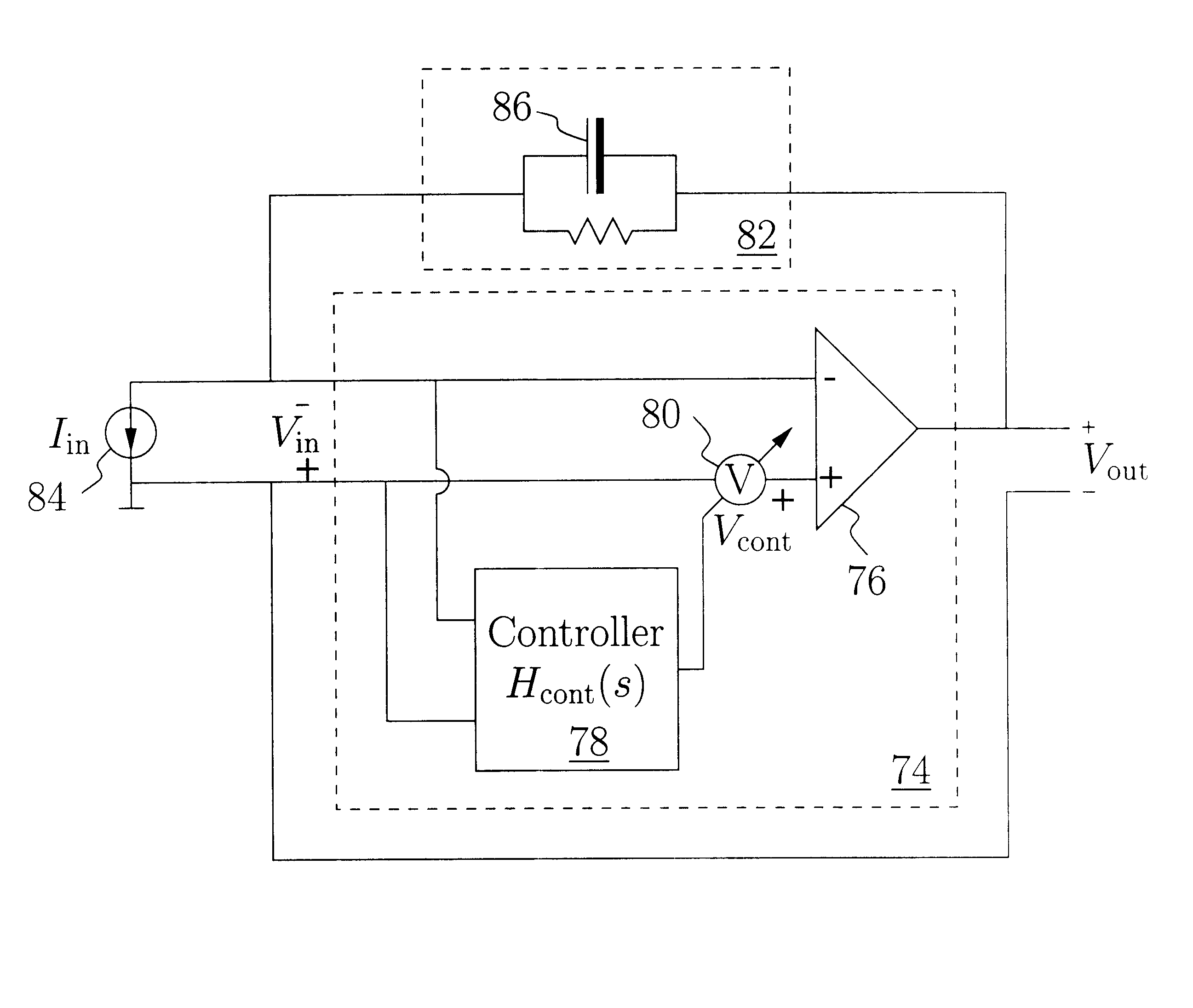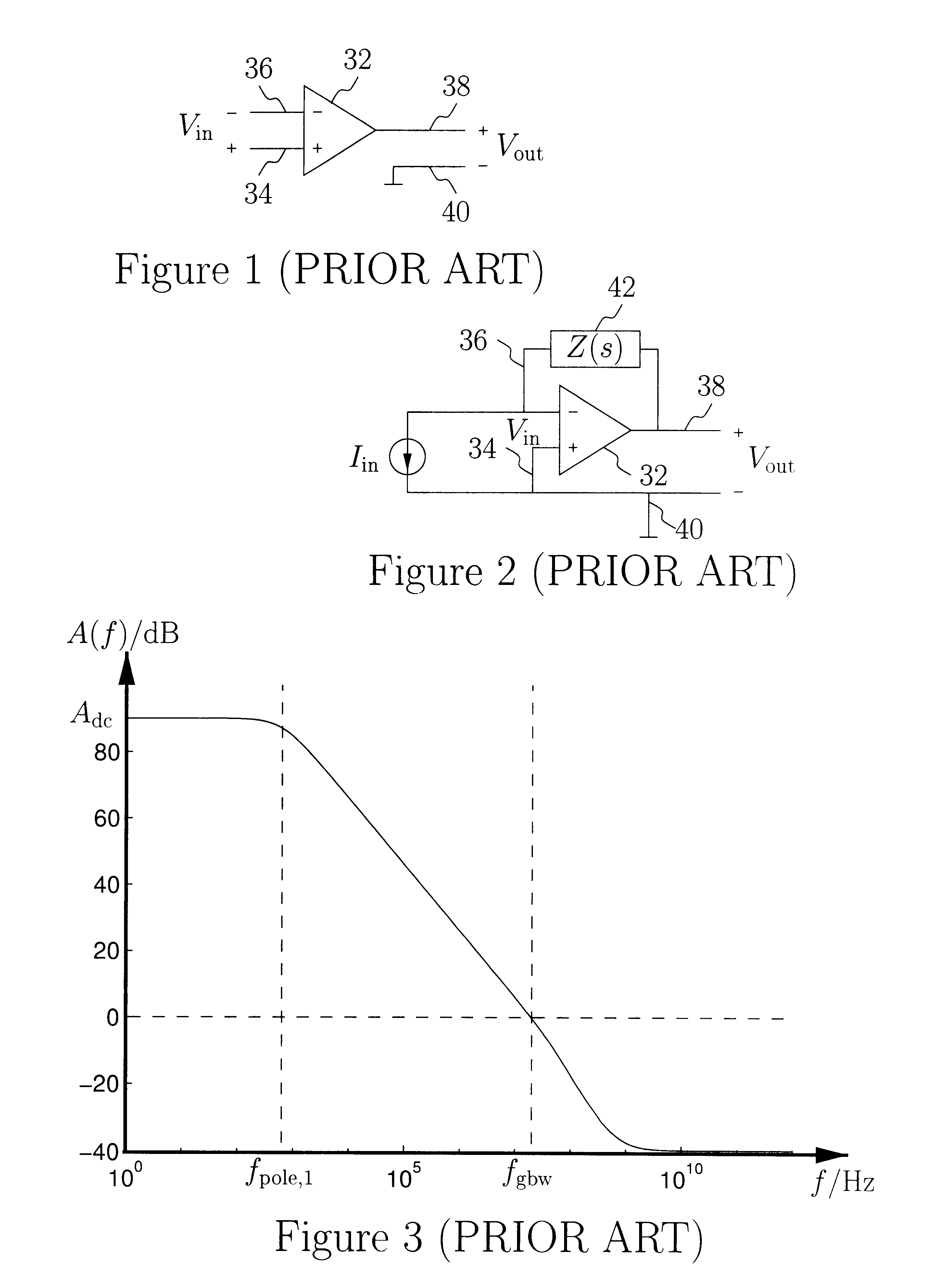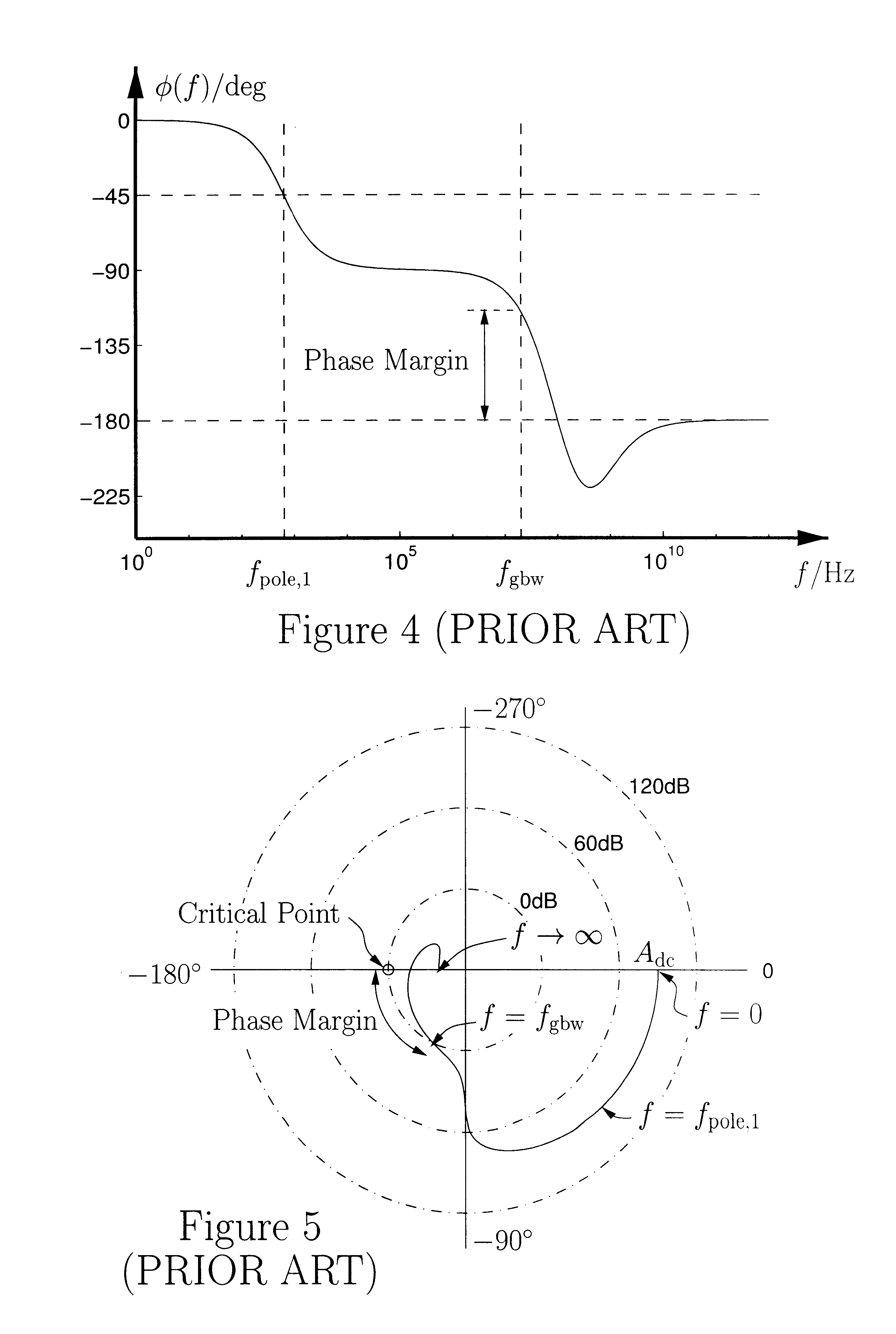Wide-bandwidth operational amplifier
a technology of operation amplifier and wide-bandwidth, which is applied in the field of analog electrical circuits, can solve problems such as unstable closed-loop system, physical opamps are not ideal, and amplifier modifications to reduce non-linear distortion
- Summary
- Abstract
- Description
- Claims
- Application Information
AI Technical Summary
Benefits of technology
Problems solved by technology
Method used
Image
Examples
Embodiment Construction
The fundamental idea of a first aspect of this invention is the same as that of noise-shaping delta-sigma loops: instantaneous errors in the output signal are acceptable provided that the signal-band power of the error signal is negligible. Hence, it is meaningful to consider the proposed opamp circuits to be "distortion-shaping" opamps. FIG. 12 illustrates the basic concept of a distortion-shaping opamp [74]. The distortion-shaping opamp [74] consists of a traditional opamp [76], a controller [78], and a mechanism to control the driving opamp's [76] offset, here represented by an offset regulator [80]. The distortion-shaping opamp [74] is intended for use in a negative-feedback configuration, which here is represented by an impedance element [82] and an input current source [84]. Hence the ideal transfer function V.sub.out (s) / I.sub.in (s) is similar to that of the circuit shown in FIG. 2.
The operation is as follows. The driving opamp [76] will, as any opamp in a stable negative-fe...
PUM
 Login to View More
Login to View More Abstract
Description
Claims
Application Information
 Login to View More
Login to View More - R&D
- Intellectual Property
- Life Sciences
- Materials
- Tech Scout
- Unparalleled Data Quality
- Higher Quality Content
- 60% Fewer Hallucinations
Browse by: Latest US Patents, China's latest patents, Technical Efficacy Thesaurus, Application Domain, Technology Topic, Popular Technical Reports.
© 2025 PatSnap. All rights reserved.Legal|Privacy policy|Modern Slavery Act Transparency Statement|Sitemap|About US| Contact US: help@patsnap.com



